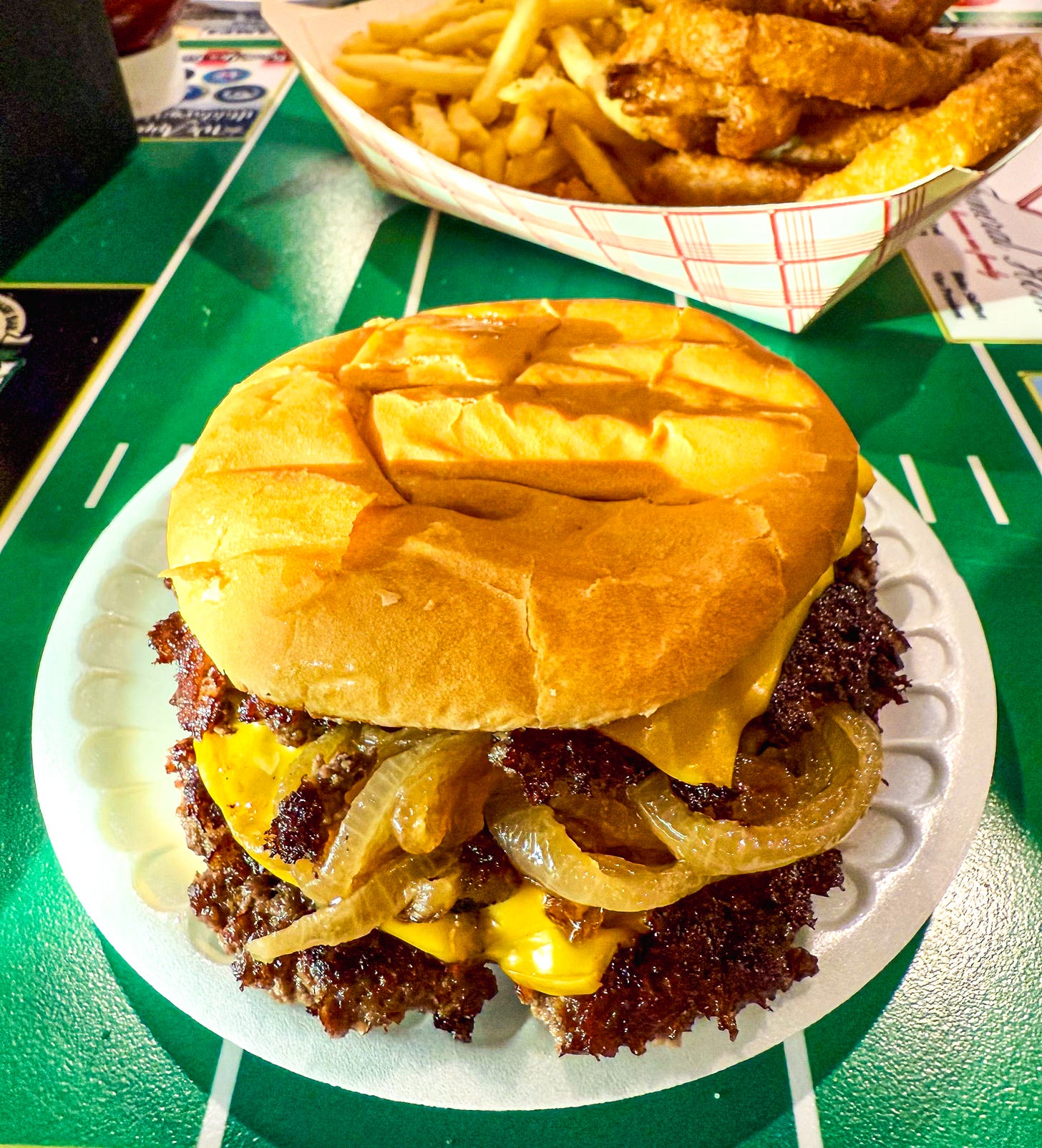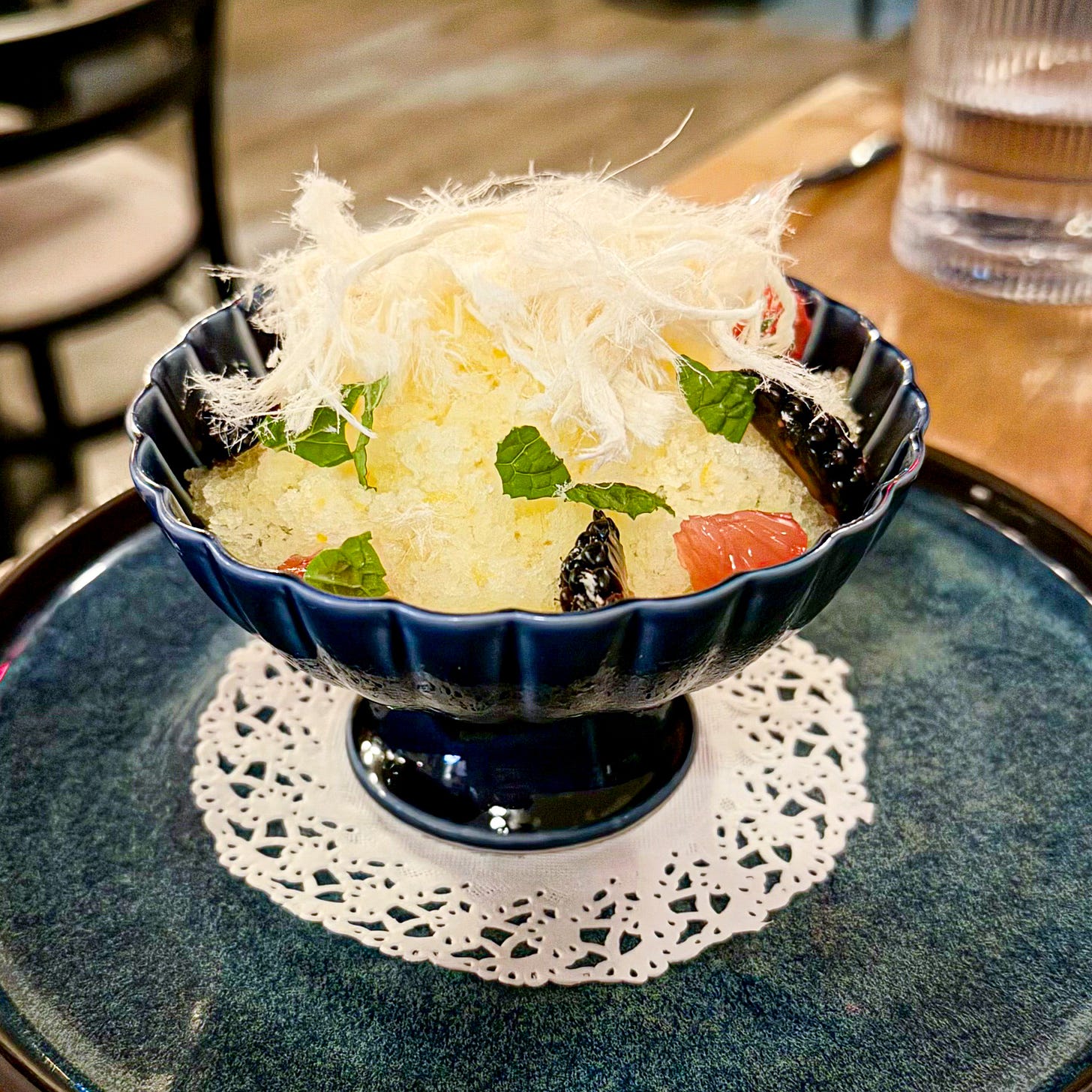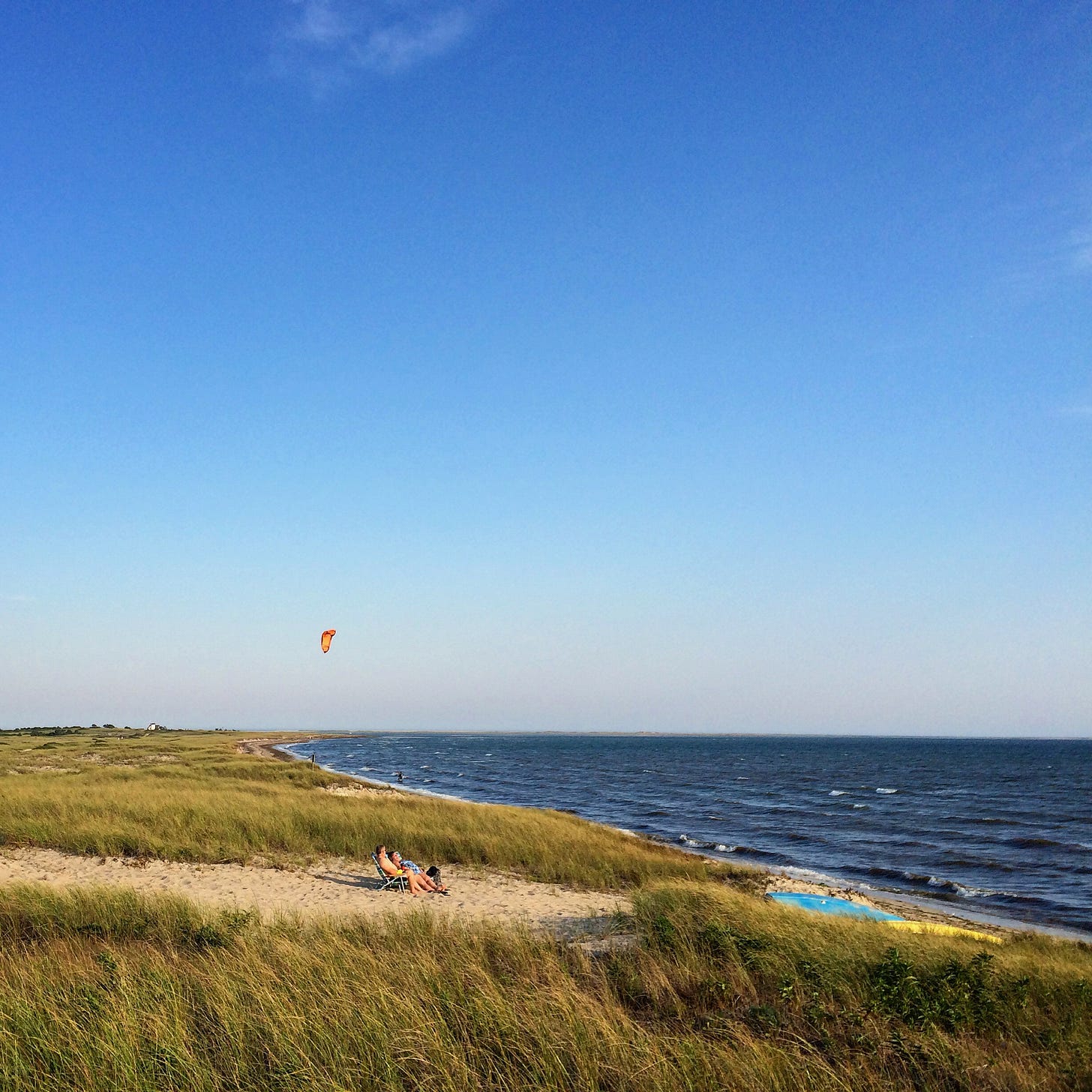Known Traveler: Simon Davidson of the Charlottesville 29
"The food and wine and beer scene alone is worth the trip to Charlottesville," says the Virginia city's dining expert.
Welcome to the weekend!
Whenever we go to Charlottesville, Virginia, we always consult the Charlottesville 29, a website run by local food writer Simon Davidson. So when we wanted to gain a deeper insight into the city’s food scene, Amy called him up to chat about how restaurants there are evolving, some places he’s loving right now, and what sets Charlottesville apart. Our latest Known Traveler Q&A highlights a lot of parallels to what’s happening around the country as well.
After you finish reading that, be sure to download this month’s Featured Field Guide. Our Charlottesville, Virginia guide is a 40-page, three-day itinerary with recommendations for breakfast, lunch, dinner, drinks, and more. It’s available for purchase on our website for any of our readers, but paid American Weekender subscribers get this guide, plus our full library of guides and access to our American Weekender Google Map for free.
We’re just back from a great trip to Charleston, South Carolina, where we had many exceptional meals and cocktails. We’ll be sharing all our recommendations for where to eat and drink very shortly! In the meantime, you can find out what The Order is at Filipino restaurant Kultura. (Hint: It takes inspiration from a fast-food staple.)
Before we sign off for the weekend, we’ve also rounded up a few stories to add to your Weekend Reading list, from beach towns to bayous to a Top Chef winner’s new restaurant in the Florida Keys. Can you tell we’re ready for warmer weather?
Thanks for reading.
— Amy Cavanaugh & Kenney Marlatt
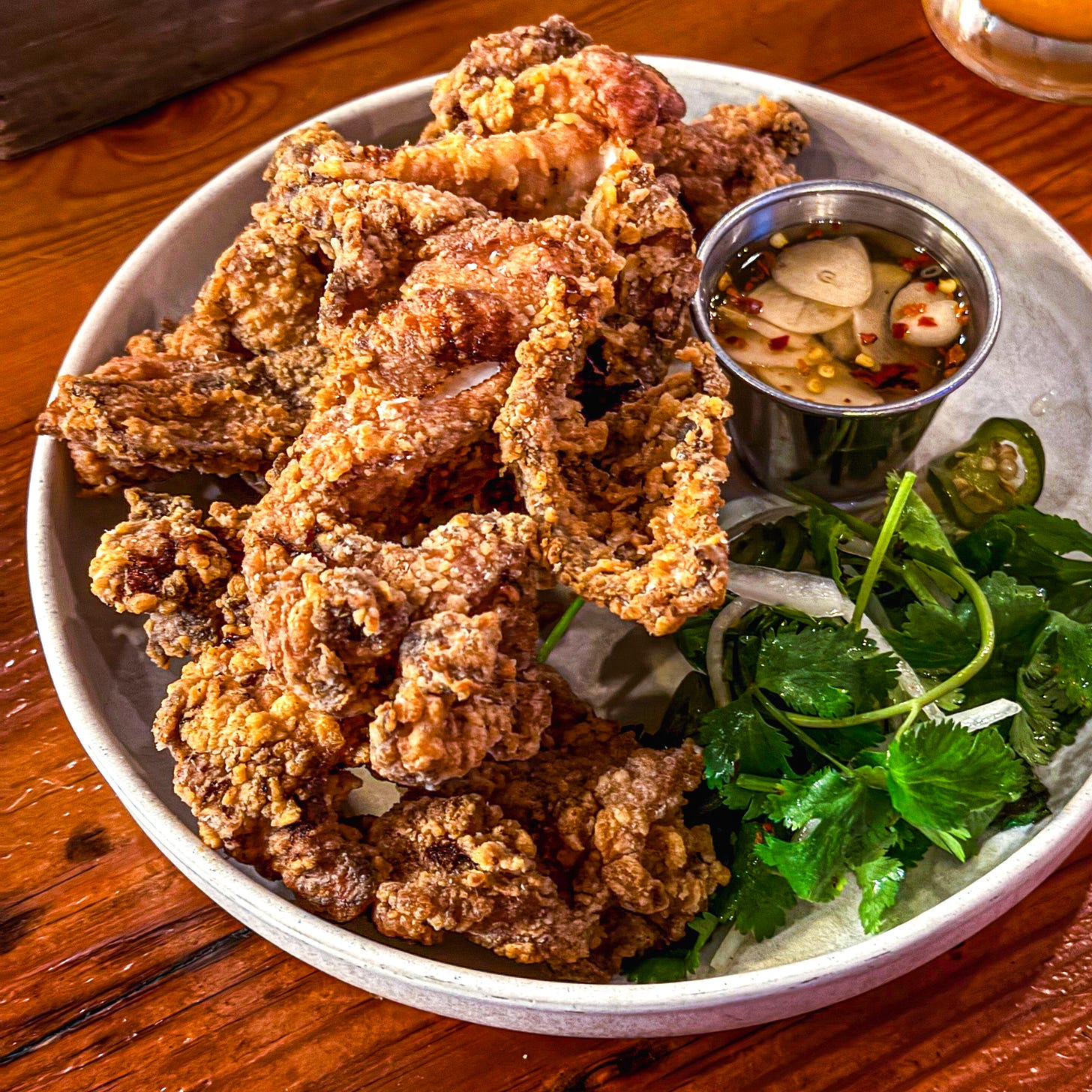
Meet UVA Grad Simon Davidson, Charlottesville’s Food and Drink Expert
CHARLOTTESVILLE, VA. — When we travel, we seek out many different local sources for food news, but few offer the sheer utility of the Charlottesville 29, named for Route 29, which runs north of the city. Simon Davidson has been running the food website since 2012, and on it, he answers the question: “If there were just 29 restaurants in Charlottesville, what would be the ideal 29?”
The website has been a resource for us for years, and we finally caught up with Davidson this month to get his thoughts on the city’s food scene overall. Davidson, who was born in England then grew up in Connecticut, went to the University of Virginia for college and law school, before moving elsewhere around the country. “Like a lot of people at UVA, I tried to finagle my way back to Charlottesville,” he says. “I’ve lived here for almost 30 years now.” That longevity, along with his curiosity, make Davidson an excellent guide to Charlottesville’s best eats.
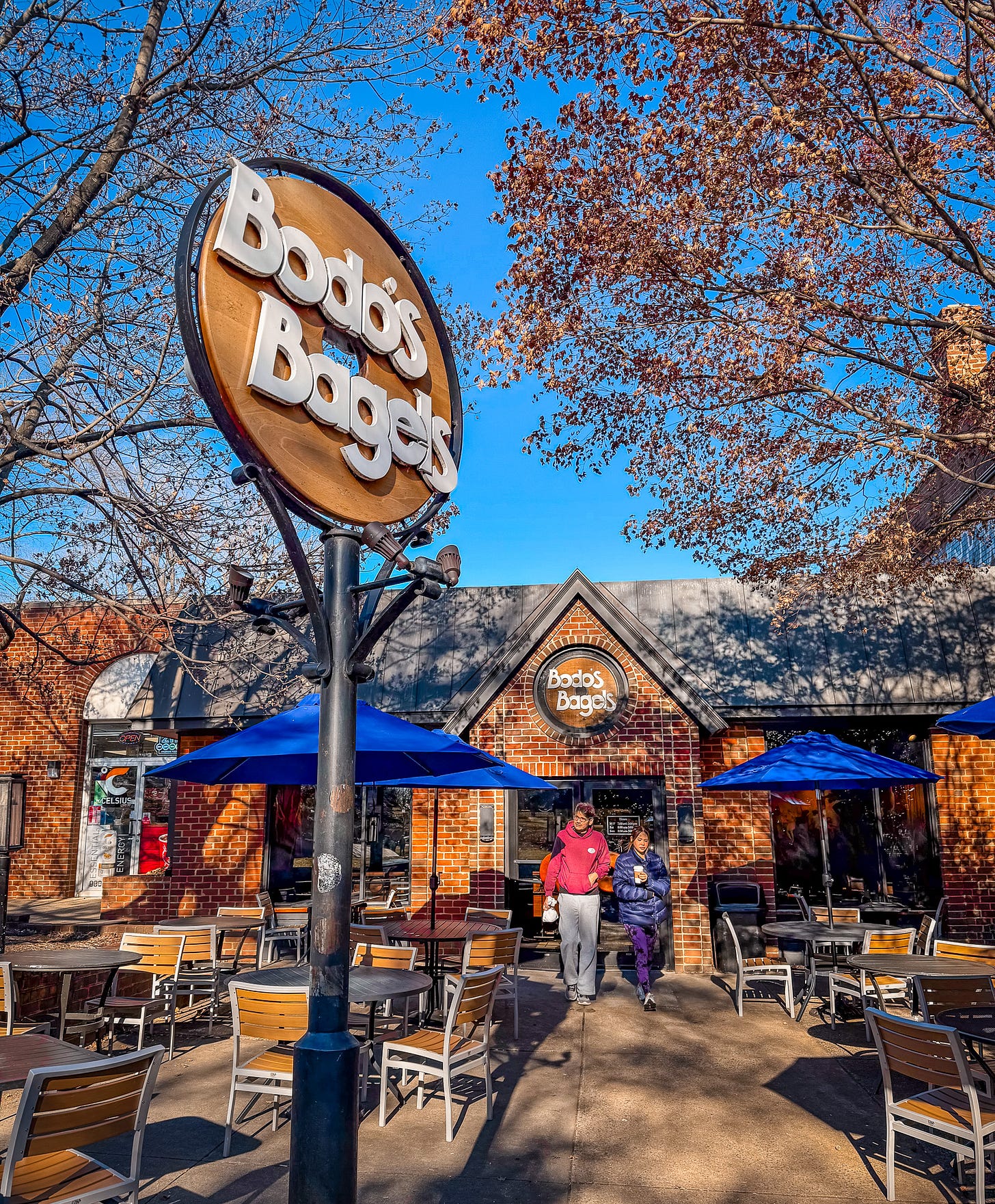
How do you think the college has shaped the food scene?
A question I get asked is ‘Why does Charlottesville have such an unusually good food scene?’ It’s attributed partially to the school. I haven’t been to Ann Arbor or Madison but a big state school helps with money and people. I think what I’ve noticed over the years is that our geography is a huge advantage. We’re surrounded by really high quality products from farms and vineyards.
The past few years have been challenging for restaurants. How has Charlottesville’s restaurant scene been faring?
I don’t know if ‘crisis’ is the right word, but it’s pretty close. A friend who was in the industry for 15 years and ran several restaurants closed them a year or two ago. He told me, ‘I don’t understand how the math works anymore for anyone. There’s inflation, staffing crisis — the math doesn’t add up.’ I hear that over and over again from people in the industry. They get pushback if they raise prices, but they can’t afford not to. Everyone says it’s more work for less money.
One of my favorite things I wrote was on this issue early in the pandemic; it’s called The Timeless Passion for Service: Why Restaurants Will Be Back. I said I didn’t think it would change restaurants and I still think that’s true. For restaurants, they got through the pandemic and then they were blasted with a staffing crisis and inflation. That has changed things really dramatically, I think. I would hope that’s temporary as well, but the biggest impact I’ve seen is that it’s slowed down openings a lot.
There was a restaurant boom in 2014 - was there something that happened that year?
Lampo was that year, Public Fish and Oyster, Alley Light, Oakhart Social, MarieBette — that’s like a greatest hits list for Charlottesville. I’ve always said it goes in cycles, and usually if there’s a big opening year, the next year there won’t be many. It happens every few years. But because of all the factors we’ve talked about, there haven’t been boom years since the pandemic. I don’t know what it was about 2014, but all of those great openings from that year are still around.
We love seeking out ham biscuits when we’re in town. Are there other regional specialties people should know?
I was on a panel with a chef, food historian, and restaurateur trying to discover Charlottesville’s signature dish, and that led to the ham biscuit. But fried chicken was a finalist we considered. The town is also a little bit associated with macaroni and cheese, since Thomas Jefferson has a big influence in the area and the story, which has been debunked, is that he discovered it in France. But he famously did like macaroni and cheese.
We also have a bunch of places with really good pupusas. I’ve been thinking about going on a pupusa crawl — pupusas are everywhere. And smashburgers are so hot, and even very nice restaurants serve them. Riverside Lunch has its 90th anniversary this year, and they’ve been making smashburgers that long. They’re the OG of smashburgers and waited 85 years until their moment in time came.
One of the new entries to the 29 this year, Hogwaller Brewing, is almost directly across the street and I call that street the smashburger capital of the world. They make smashburgers which I think are even better than Riverside’s, so that’s high praise. Hogwaller recently opened and they take the best of Riverside and do it in a modern way, getting meat from a nearby farm and bread baked locally.
The 29 includes longtime classic spots like Bodo’s Bagels and the C&O, which are two of our favorites. What other restaurants would you consider landmarks?
Riverside is one, though they’re not on the 29. Most of the places on the 29 have been around for a long time and that’s not a coincidence — good ones last. I think people say that about Duner’s, which has been here since the ‘80s, and the Ivy Inn, which just hit its 30th year. Lampo is getting close. They’re in their 11th year and they’re a fixture. They’ve become so popular there are two. One of the exceptions to the idea that nothing has changed since the pandemic is that they went from offering no takeout ever, except when it snows, to a take-out only location.
What are a few places you’re especially excited about right now?
I get asked this a lot, so I like to keep something top of mind — Smyrna is what I say. I think one of the things I like about it — besides the people who run it, who are amazing — is that there are a fair amount of Turkish places in cities, but very often they serve street food or grilled food like kebabs. This is one of the only places that I’ve seen a more refined approach to Turkish cuisine. The chef, Tarik Sengul, worked at Joel Robuchon in New York, so he has a very rigid French classical approach to the kitchen as far as fundamentals go, then he uses those techniques to celebrate his native cuisine using Virginia ingredients. So a lot of things are coming together to make what I think is pretty unusually good food.
I also spend a lot of time at Hogwaller. They really do have an amazing smashburger and the brewer used to be the head brewer at Maine Beer Company. I’m very into beer and Maine and had no idea he was from Charlottesville until he moved back to town. He makes similar recipes to what he did in Maine.

How did you come to start the 29?
It was a good way to combine three of my passions: Food, writing, and Charlottesville. I think Charlottesville is one of those places that people get excited about living in. I’ve lived in other places but sometimes people that live there are indifferent. In Charlottesville, people rally around it and love the area — I’m like that. I thought that celebrating the food community through writing would be a good way to combine these three passions.
How has the site evolved over time?
When I first started the site, I had thought of it as a book, but then I realized that books are hard. I was a novice when it came to the internet, and I was like, you can just go on Wordpress and type something and then the whole world can see this? That’s a lot easier. So initially, for each restaurant I had a really in-depth story behind it and the people starting in their childhood and what led them to the restaurant. I did one every few months and then gradually, once I finished it a few years in, I realized that it could serve as an annual guide. I do an annual update in March.
Now it reads more like a guide for traveling. When I travel, I have to sniff around to find local resources that are legitimate, especially these days when there’s so much paid stuff and you can’t tell whether or not something is by an influencer. So the product now is really what I hope I could find if I went to another city. Each entry tells you why it was picked and what to order. The ‘what to order’ comes from my own suggestions, as well as the chef-owner of the restaurant. Then there’s a collection of Five on Friday, where a person picks five favorite dishes around town. There are hundreds of those and each guide collects all the times they’ve been picked over the years. So it’s a guide and resource for people that answers: Where should I go and what should I eat when I get there?
I appreciate the 29 since it’s a robust list of restaurants, but not overwhelming. How do you feel about selecting 29?
I think 29 is a small enough number that it still makes it meaningful, but it’s a challenge every year. I’ve had to remove places, not because they had a drop in quality, but because we have more and more good ones every year. I always say that the restaurants that are not on the 29 are a better testament to Charlottesville’s food community than the ones that are. We have some good places that I reluctantly have to omit, and so you may say, ‘If that place isn’t on the list of 29 essential restaurants, Charlottesville must have a pretty amazing scene.’
Do you aim to swap out a certain number each year?
No. We’ve had years where there are no changes. This year there were two.
How have you seen Charlottesville’s food scene evolve in your time covering it?
It’s changed a lot. I think immigration has been one big factor; we’ve become a more diverse community and we have more varieties of different national cuisines. I just started writing a monthly column for the Daily Progress, and the first one is El Tio, a Salvadoran restaurant. We’ve added so many different cultures that we didn’t have before. We didn’t have any Korean restaurants, now we have four. It’s become richer and more diverse.
How have you evolved your food coverage?
I used to write for C-Ville Weekly and I would bring a special guest to dinners. One of the early guests to come along for a review was Tom Sietsema from the Washington Post. He came down a couple of times and we went out together. This was really early on when I got into food writing, and he said something like ‘it’s a strange phenomenon — you devote your life to writing about certain people and entities but you can’t have any relationship with them.’ But I'm not really that type of food writer, and the thing that has surprised me most is the friendships and relationships. I’ve been writing about places and been here so long that despite what Tom says I can’t keep that distance. I started by doing it anonymously, but it’s too small a town. Those relationships are what makes it challenging every year. I try to do it as objectively as I can — it’s all about taste, so it’s not objective — and not let personal relationships influence things.
I think that sometimes subconsciously, sometimes consciously, I’ve been more and more celebrating cuisines from immigrants. I was born in England, and a term my dad used was “Americans by choice.” Other people were born here and the rest of us decided to be American. I have a weak spot for stories of people who have fled their countries to come to Charlottesville and brought their cuisines here as a way of making a living and sharing them with the community.
What is something you wish travelers knew about Charlottesville’s food scene?
I had a friend from New York — he’s a banker and used to the finer things in life — who visited last year and was stunned. I think people might have a perception that we’re folksy country bumpkins in the middle of Virginia. But I think for people who travel for food, it’s worth traveling for. I’d have a hard time imagining many places that have a food scene I prefer given the number of people here. I think the food and wine and beer scene alone is worth the trip to Charlottesville, which I think a lot of people wouldn’t expect.
Download All Our Charlottesville Recommendations
Ready to plan your trip to Charlottesville? Our full list of favorites is available in our Field Guide to Charlottesville — free for paid subscribers! This 40-page dining guide includes a curated three-day itinerary with recommendations for breakfast, lunch, dinner, and drinks. It’s downloadable for offline reading, includes Google Maps and Instagram links, and is formatted for your phone — perfect for easy reference on your next trip.
Paid subscribers received a code to download a free copy of the guide in this month’s Weekend Getaway issue, so upgrade your subscription today and get your complimentary copy. (You can also purchase this Field Guide on our website, but a paid subscription is a better deal since you’ll also get access to our American Weekender Google Map and can download any other Field Guide you’d like for free!)
Jollybee at Kultura
CHARLESTON, S.C. — On our recent trip to Charleston, one place that stood out was Kultura, a Filipino restaurant where every dish we tried was a hit. One favorite was the Jollybee. If you’ve been to Jollibee, the Filipino fast food chain, which has some locations in the U.S., you know exactly what this dish is a play on: Jolly spaghetti. The version at Jollibee consists of ground beef and sliced hot dogs in a sweet tomato sauce, which is served over spaghetti and topped with shredded Cheddar cheese. If you grew up eating it, it’s probably the kind of thing you’d crave from time to time — as Kultura chef Nikko Cagalanan wrote on Instagram, “It’s always my first and last meal when I go back home (’cause, yes, there’s one in the airport!).”
At Kultura, Cagalanan, who moved to the U.S. from the Philippines in 2011, offers a take that’s worthy of his James Beard-nominated restaurant. He dresses lumache with a pork and mushroom banana ketchup ragu, then melts truffle cheese over the top. If you didn’t catch the reference, you’d probably just think it’s a terrific pasta dish. But if you know, you can see the throughlines, and understand how Cagalanan is a chef who cooks with precision and wit.
73 Spring St Unit A, Charleston, SC | @kulturacharleston
ATLANTIC COAST
The 8 Best Beaches on the East Coast: If you are planning a summer beach getaway, Condé Nast Traveler’s Kat Chen put together a list of some great coastal destinations. We love a good beach week and particularly enjoy Cape Cod’s mix of charming cottages and kitschy seafood shacks.
FLORIDA
Jeremy Ford is Having His Moment: Speaking of the beach, Top Chef winner Jeremy Ford has opened a new coastal hotspot, Salt + Ash, in the Florida Keys. “Ford utilizes a cornucopia of fresh seafood at his doorstep, along with produce from his small farm, just a few hours away,” writes
for Broken Palate. “He takes advantage of these resources with dishes that touch upon his fine dining expertise but still remembers that this restaurant is in a family-friendly resort in the Florida Keys.”LOUISIANA
’ Yolo Journal recently posted a Q&A with Melissa Martin of Mosquito Supper Club in New Orleans. Martin discusses her second cookbook, Bayou, the food of her childhood, and some great side trip ideas for the region. One suggestion, Lafayette, is just two hours west of New Orleans. “There’s lots of good music, good dancing, and good food around there. You really could make a weekend in Lafayette, especially if it’s one of the festivals they have there, like the Black Pot Festival or Festivals Acadians.”— Compiled by Kenney Marlatt
Want more? Chat with us on Substack, download our Field Guides, check out our archives, or follow us on Instagram @americanweekender. We’ll be back next week.








